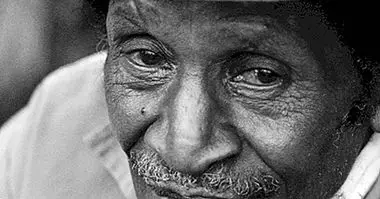The Self-Instruction Training and the Stress Inoculation Technique
The Behavior Modification Techniques they have been one of the central elements on which the cognitive-behavioral intervention has traditionally been based. At its birth, the Theories of Learning proposed by Thorndike, Watson, Pavlov or Skinner emphasized the role played by the stimulus that accompanies the learning situation (by association or by contingency).
Later, after the rise of Cognitive Theories, it seems to have been demonstrated that the psychological change in the individual is deeper and more complete when you work also the modification of deep cognitions and beliefs , and not just the most behavioral part.
According to this, let's see two of the techniques that try to illustrate what it is and how this change is made at a more internal and mental level: Training in Self-Instruction and Stress Inoculation .
Self-instruction training (EA)
The Training in Self-Instruction highlights the role of the internal verbalizations that the person himself makes about his future execution at the time of carrying out a certain behavior.
An internal verbalization (or self-verbalization) could be defined as a set of commands or instructions that the person gives himself to guide the management of his behavior during his performance. Depending on how this instruction is done, the person will feel more or less capable of performing the behavior effectively.
This technique can be applied as a therapeutic element in itself or it can also be considered as a component of Stress Inoculation therapy , as will be explained later.
Training Components in Self-instructions
The EA is composed of several elements: modeling, behavior testing and cognitive restructuring . Let's find out what each of them consists of:
1. Modeling (M)
Modeling is a behavioral technique that is based on the idea that all behavior can be learned by observation and imitation (Social Learning). It is used in order to acquire or strengthen new more adaptive response patterns, weaken those that are inadequate or facilitate those that the person already has but do not put into practice for various reasons (anxiety in execution, for example).
To carry out the procedure it is necessary that a model perform the successful behavior in the presence of the person and that they practice it in a way that gradually increases their autonomy as the help received by the model decreases. In addition, this informs the person about the adequacy of the execution of the behavior and indicates possible aspects to improve.
2. Behavior test (EC)
This technique resembles the previous one, since it also serves to learn new behavioral skills, especially social or interpersonal skills. It consists of staging a potentially anxiogenic behavioral repertoire in the context of professional consultation, in such a way that the subject can feel more secure by being artificial reproductions and easily manipulated.
Therefore, the EC allows the reduction of the level of anxiety of the subject before the execution and a greater predisposition to "train" their behavior without fear of suffering the consequences that would have if the situation were in the real context. At first the representations that are proposed are very guided by the professional and gradually they become more flexible and natural.
3. Cognitive Restructuring (RC)
It is based on the idea that psychological problems are caused and maintained by the way a person interprets their environment and their circumstances. That is an event by itself has no positive or negative emotional value , but the evaluation that is made of this event is the one that provokes one type of emotion or another. If the event is interpreted conceptually as something positive, the derived emotional state will also be pleasant. On the other hand, if a negative cognitive assessment is made, a state of emotional distress will be derived.
The idea of negative interpretation of the event, normally, is followed immediately by a series of thoughts that are known as irrational beliefs , since they are expressed in an absolutist and dogmatic way (of all or nothing) and do not take into account other possible alternative explanations. How, for example, to highlight excessively the negative, to exaggerate what is unbearable or to condemn people or the world if they do not provide the person what they think they deserve.
The Cognitive Restructuring is the main element of the Rational Emotive Behavior Therapy of Albert Ellis, which has the objective of modifying this inadequate belief system and providing the individual with a new philosophy of life more adaptive and realistic.
The central practice of CR rests in the performance of an exercise (mental or written) in which the initial irrational cognitions derived from the situation occurred must be included, the emotions that these have generated and finally, a set of reflections of objective and rational character that question the negative thoughts mentioned. This record is known as the ABC Model.
Process
The EA procedure begins with the self-observation and the recording of the verbalizations that the person makes about himself with the objective of eliminate those that are inappropriate or irrelevant and that they are interfering in the successful execution of the behavior (For example: everything goes wrong, I am to blame for everything that has happened, etc.). Subsequently, the installation and new, more correct self-verbalizations are carried out (For example: making an error is sometimes normal, I will achieve it, I am calm, I feel capable, etc.).
More specifically, the EA is composed of five phases:
- Modeling: the person observes how the model deals with the negative situation and learns how it can be carried out.
- External guide out loud: the person faces the negative situation following the instructions of the therapist.
- Self instructions aloud: the person faces the negative situation while self-directing aloud.
- Self instructions in voice: the person faces the aversive situation while self-directing but this time in a very low voice.
- Self-directed instructions: the person faces the negative situation guiding their behavior through internal verbalization.
Stress Inoculation Techniques (IE)
Stress Inoculation Techniques have the objective of facilitating the subject's acquisition of certain skills that allow both decrease or cancel the tension and physiological activation as well as eliminate the previous cognitions (of pessimistic and negative character, frequently) by more optimistic assertions that facilitate an adaptive coping of the stressful situation that the subject must make.
One of the theories on which this technique is supported is the Stress Coping Model of Lazarus and Folkman. This procedure has proven its effectiveness especially in Generalized Anxiety Disorders.
Process
The development of Stress Inoculation is divided into three phases: an educational, a training and an application . This intervention acts both in the cognitive area, as in the self-control and behavioral adaptation to the environment.
1. Educational phase
In the educational phase Patient information is provided on how anxious emotions are generated , emphasizing the role of cognitions.
Subsequently, an operative definition of the specific problem of the person is made, through different data collection instruments such as an interview, a questionnaire or direct observation.
Finally, a series of strategies that favor and facilitate the adherence of the subject to treatment are launched . For example, establishing an adequate therapeutic alliance based on the transmission of trust.
2. Training phase
In the training phase the person is shown a series of procedures in order to integrate skills related to four major blocks: cognitive, control of emotional activation, behavioral and palliative coping. To work each of these blocks, the following techniques are put into practice:
- H cognitive abilities : in this block Cognitive restructuring strategies, problem solving techniques and practice self-instruction exercises accompanied by positive reinforcement later.
- C activation control : this is about training in relaxation techniques focused on the sensation of tension-muscle relaxation.
- Behavioral skills : techniques such as behavioral exposure, modeling and behavior testing are addressed here.
- Coping skills : finally, this block is composed of resources to enhance attentional control, the change of expectation, the adequate expression of affect and emotions, as well as the correct management of perceived social support.
3. Application phase
In the application phase it is tried that the person is exposed to situations ansiógenas (real and / or imagined) of gradual form , starting up everything learned in the training phase. In addition, the effectiveness of the application of the techniques is checked and assessed and doubts or difficulties are solved during their execution. The procedures that are used are the following:
- Imagined trial : the individual performs a visualization as vivid as possible of coping with the anxious situation.
- Behavioral test : the individual stages the situation in a safe environment.
- Graduated in vivo exposure : the individual is in the real situation naturally.
Finally, to complete the intervention in Stress Inoculation some more sessions are scheduled in order to get a maintenance of the achievements obtained and to prevent possible relapses. In this last component aspects such as the conceptual differentiation between fall -puntual- and relapse -more maintained over time- or the programming of follow-up sessions are worked on, continuing with a form of indirect contact with the therapist, mainly).
In conclusion
Throughout the text it has been observed how, as initially stated, the psychological intervention that addresses different components (cognitions and behaviors, in this case) can be increased its effectiveness for the achievement of psychological change raised by a person. Thus, as demonstrated by the principles held by the Language Psychology, The messages a person makes to himself tend to shape the perception of reality and therefore, the capacity for reasoning.
Therefore, an intervention also focused on this component will allow a greater probability in maintaining the psychological change obtained in the individual.
Bibliographic references:
- Labrador, F. J. (2008). Behavior Modification Techniques. Madrid: Pyramid.
- Marín, J. (2001) Social Psychology of Health. Madrid: Psychology synthesis.
- Olivares, J. and Méndez, F. X. (2008). Behavior Modification Techniques. Madrid: New library.



















